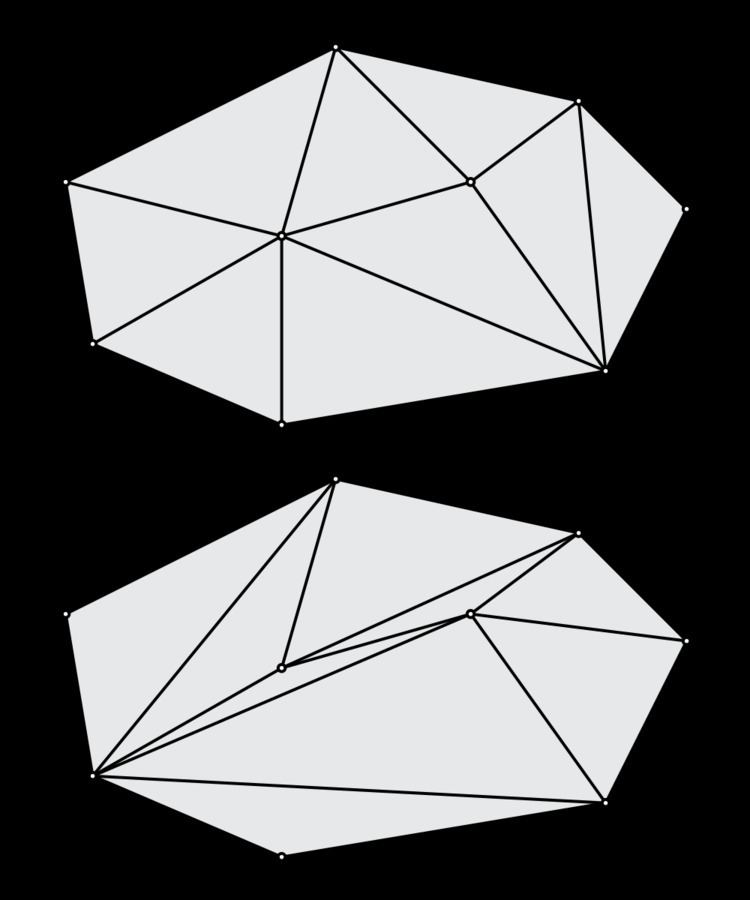 | ||
A triangulation of a set of points
Contents
- Regular triangulations
- Combinatorics in the plane
- Algorithms to build triangulations in the plane
- Time complexity of various algorithms
- References
A particularly interesting kind of triangulations are the Delaunay triangulations. They are the geometric duals of Voronoi diagrams. The Delaunay triangulation of a set of points
Triangulations have a number of applications, and there is an interest to find the "good" triangulations of a given point set under some criteria as, for instance minimum-weight triangulations. Sometimes it is desirable to have a triangulation with special properties, e.g., in which all triangles have large angles (long and narrow ("splinter") triangles are avoided).
Given a set of edges that connect points of the plane, the problem to determine whether they contain a triangulation is NP-complete.
Regular triangulations
Some triangulations of a set of points
Combinatorics in the plane
Every triangulation of any set
Algorithms to build triangulations in the plane
Triangle Splitting Algorithm : Find the convex hull of the point set
Incremental Algorithm : Sort the points of
Time complexity of various algorithms
The following table reports time complexity results for the construction of triangulations of point sets in the plane, under different optimality criteria, where
